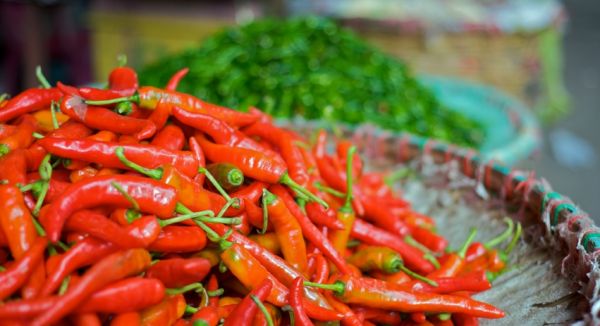Published on December 11, 2009

Thai food has become a world superstar in the last 20 years, and many visitors will have tried dishes from the Land of Smiles in their home towns. But visiting the country itself is an opportunity to taste the real deal, the authentic flavors and recipes that are (often wrongly) deemed unsuitable for foreign palates.
Yes, this means some unusual flavors will confront you. Duck’s feet might not appeal to everyone – there’s not much meat, you just kind of suck the gelatinous nutrients from the bones and talons –they’re actually delicious. And the nutty silk worms you find at bug stalls around the country, while challenging, would actually make ideal canapés at a not-so-squeamish dinner party.
The taste for creepy-crawlies is usually associated with the Northeast, one of Thailand’s four regional cuisines, along with North, South and Central, each influenced by its geography and neighboring countries.
Broadly speaking Southern and Northeastern Thailand are spiciest, Central is medium spicy and Northern is the mildest. It’s a common misconception that all Thai food is hot. Likewise, not all Thais like hot food.
Central has many of the dishes that are now internationally famous, such as the shrimp soup tom yam goong, rich in galangal and lemongrass, and red and green curries. These recipes are softened by coconut milk, an influence of the royal courts, and are slightly sweeter than the rest of the country. A good green curry, though, is made with the tiny green prik khee noo (bird dropping chillies) and can still be pretty fierce for novices. Central food is found in all regions, but the others are mostly found only in their native areas. Even in cosmopolitan Bangkok it’s not that easy to find Northern and Southern dishes.
The classic Northeastern favorite is somtam, a sour and spicy green mango salad that’s now widely eaten countrywide, although containing fewer than the ten chillies that’s normal in the region. This is always made fresh, so you can say how many chillis you want – Bangkokians might have four to six, sensible foreigners something less.
The authentic version uses nam pla raa (fermented, uncooked fish sauce) and crushed black field crabs, and has a gut-wrenching smell for many people. The taste is too much even for many Thais, who custom-build their own.
Most meals are served in the center of the table for everyone to share, and come with rice. In the north and northeast, it will usually be sticky rice, which you shape into a ball with your fingers and dip into the food. Elsewhere it will be khao suay (beautiful rice). The best kind, jasmine rice, is so highly regarded that Thailand has patented its genetic code.
The other main staple is noodles, a product of the Chinese influence that’s found everywhere. At lunchtime, it seems every citizen in the land sits at a noodle stall eating them dry or with a tasty broth, usually topped with duck, chicken, crispy pork or fish balls and seasoned from pots of chilli, sugar, fish sauce and vinegar on each table. Actually, it’s not just lunchtime, Thais love food so much they snack all day long. And it’s easy to see why.
Howard Richardson, the ex-editor of Bangkok Metro magazine, has written about Asian destinations for the BBC, GQ, and the New York Times online.






